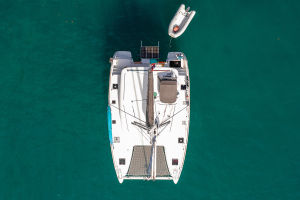Starfish, belonging to the phylum Echinodermata, are marine organisms with unique shapes and complex structures that often spark curiosity.
This article will provide a detailed introduction to the biological characteristics, and ecological habits, and focus on how starfish without "legs" move.
Starfish typically exhibit a pentagonal shape, though some species may have multiple arms. Their bodies primarily consist of a central disc and several radiating arms. The surface of a starfish is covered with numerous small calcareous plates and spines, which not only provide protection but also play roles in movement and feeding. Starfish come in a variety of colors, from vibrant reds and blues to more inconspicuous grays.
The internal structure of a starfish is quite complex. Its digestive system includes an internal stomach and an external stomach. The internal stomach is used for digestion, while the external stomach can extend outside the body to capture and digest food. A unique feature of starfish is their water vascular system, which is used for fluid circulation and movement.
This system consists of a series of water-filled canals, tube feet, and fluid. Water canals extend from the central disc and are filled with seawater. By regulating water pressure, starfish achieve movement.
Starfish have a distinctive mode of locomotion, especially those without visible "legs." These starfish primarily move using their tube feet within the water vascular system. The water vascular system includes water canals and tube feet, with the internal canals filled with seawater. By contracting and expanding the canals, the starfish adjust the fluid pressure, allowing the tube feet to extend or retract, thereby propelling the starfish along the seabed.
The coordination of each pair of tube feet is crucial for movement. When one pair of tube feet extends and attaches to the surface, another pair retracts, causing the starfish to move forward. This process resembles a gait, with tube feet extending and retracting in sequence, allowing the starfish to move slowly and steadily.
The tube feet have suction cups on their bottom that can firmly attach to the seabed. Starfish adjust the suction force of their tube feet to achieve fixation and release, maintaining stability while moving. Different species of starfish vary in their mobility. For example, some starfish like the common starfish can move quickly on harder substrates, while others adapted to softer sediments move more slowly. These differences are primarily related to their habitat and ecological needs.
Starfish play an important role in marine ecosystems. As benthic animals, they typically feed on other small marine organisms such as bivalves, mussels, and sea urchins. Some starfish also act as scavengers in the ecosystem, helping to maintain ecological balance through the food chain. Additionally, their presence provides a habitat for other marine life, promoting biodiversity in marine ecosystems.
In summary, starfish, as unique marine creatures, attract scientific attention with their unusual morphology and locomotion mechanisms. This unique mode of movement showcases the diverse and fascinating forms of life in the natural world. Understanding how starfish move not only deepens our knowledge of this organism but also enhances our understanding of the complexity of marine ecosystems.


